
|
Navigate |
| Home |
| Kirstie Alley |
| Our 30th Anniversary |
| Never Turning Back |
| Narconon Endorsements |
| |
|
|
| |
|
|
| |
|
Facts About Drugs |
| FAQ About Ambien |
| FAQ About Ativan |
| FAQ About Cocaine |
| FAQ About Codeine |
| FAQ About Crack |
| FAQ About Darvocet |
| FAQ About Dexedrine |
| FAQ About Demerol |
| FAQ About Dilaudid |
| FAQ About Ecstasy |
| FAQ About GHB |
| FAQ About Heroin |
| FAQ About Hydrocodone |
| FAQ About Ketamine |
| FAQ About Lortab |
| FAQ About LSD |
| FAQ About Marijuana |
| FAQ About Morphine |
| FAQ About Meth |
| FAQ About Methadone |
| FAQ About Opiates |
| FAQ About Opium |
| FAQ About Oxycontin |
| FAQ About Percocet |
| FAQ About Percodan |
| FAQ About Ritalin |
| FAQ About Rohypnol |
| FAQ About Ultram |
| FAQ About Valium |
| FAQ About Vicodin |
| FAQ About Xanax |
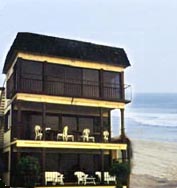 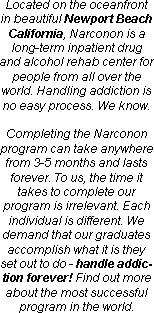 |
|
Resources |

|


 Print this article |  Send this article to a friend |  Add to Favorites |
FAQ
About GHB
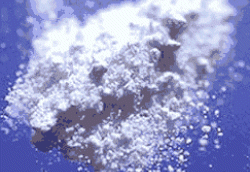
Q)
What is GHB? A)
Gamma hydroxy butyrate or Gamma hydroxybutyric acid, Sodium Oxybate GHB
is a central nervous system depressant that can relax or sedate the body. At higher
doses it can slow breathing and heart rate to dangerous levels. Your body manufactures GHB for its normal metabolism. The only reason people take GHB at a party is to get high, not for their health. People are kidding themselves if they imagine they're taking a vitamin supplement or amino acid, even though GHB has been marketed as such. Just because trace, minute amounts of GHB are found in a human body doesn't make the lab-created form of it safe to consume! |
Q) What does GHB look like and how is it used?
A) GHB can be produced in clear liquid, white powder, tablet, and capsule forms. When in clear liquid form it looks just like water. It can be mistaken for water because it is usually found in a small (30ml) clear plastic bottle, a water bottle, or even Gatorade bottles, which contains several doses. One dosage is usually a capful. There are approximately 9 hits per bottle, but this, too varies depending on the concentration of the mix. GHB has become notorious for its use in crimes, particularly rape. Colorless, odorless, and tasteless, it can be slipped into drinks and ingested without the victim having any clue. It causes sedation, often rendering the victim helpless. It also produces amnesia, making it very difficult to arrest and convict a perpetrator.
Q)
What are the effects of GHB?
A) The effects of GHB include: Intoxication,
increased energy, happiness, talking, desire to socialize, feeling affectionate
and playful, sensuality, enhanced sexual experience, muscle relaxation, loss of
coordination due to loss of muscle tone, nausea, difficulty concentrating, loss
of gag reflex. GHB's intoxicating effects begin 10 to 20 minutes after the drug
is taken. The effects typically last up to 4 hours, depending on the dosage.
Q)
What are the side effects of GHB use?
A)
The side effects of GHB use include: nausea, headaches, drowsiness, dizziness,
amnesia, vomiting, loss of muscle control, respiratory problems, loss of consciousness,
being conscious but unable to move, and death, sedation, desire to sleep, rambling
incoherent speech, giddiness, silliness, difficulty thinking, slurred speech,
passing out, and death. - Especially when combined with alcohol or other drugs
Q)
Can you overdose on GHB?
A)
Yes, an overdose of GHB can occur rather quickly. The signs are similar to those
of other sedatives: drowsiness, sleep, loss of consciousness, nausea, vomiting,
headache, loss of reflexes, impaired breathing, slowed heart rate, respiratory
depression, seizures, hypothermia, coma, blocked airway due to loss of gag reflex,
and ultimately death.
"GHB has several characteristics that increase the likelihood of toxicity," says Dr. Frankenheim. "A small increase in dose can push the sedative effects to a lethal level. High doses of GHB overwhelm the body's ability to eliminate the drug, and therefore lead to greater effects of longer duration than expected." GHB's purity and strength are especially difficult to determine because the drug can be made from a number of chemical formulas, which differ in the amount of GHB produced when metabolized by the user's body.
Q)
What are the effects of GHB withdrawal?
A) The effects of withdrawal from GHB are: insomnia, anxiety, tremors, and sweating.
Q)
Is GHB addictive?
A) Because widespread use of GHB is relatively recent, the worst effects of this drug are not known yet. There are indications, however, that the potential may be significant. GHB users have reported that they need higher and higher doses to get the effects that they want, and that when they try to quit, they can't.
Q)
What are the slang terms used for GHB?
A) "G" (most common), Gamma-OH, Liquid E, Fantasy, Georgia Home Boy, Grievous Bodily Harm, Liquid X, Liquid Ecstasy (is not ecstasy), Scoop, Water, Everclear, Great Hormones at Bedtime, GBH, Soap, Easy Lay, Salty Water, G-Riffick, Cherry Meth, Organic Quaalude, and Jib.
Q)
What is the extent of use of GHB?
A)
GHB and two of its precursors, gamma butyrolactone (GBL) and 1,4 butanediol (BD)
have been involved in poisonings, overdoses, date rapes, and deaths. These products,
obtainable over the Internet and sometimes still sold in health food stores, are
also available at some gyms, raves, nightclubs, gay male parties, college campuses,
and the street. They are commonly mixed with alcohol (which may cause unconsciousness),
have a short duration of action, and are not easily detectable on routine hospital
toxicology screens.
GHB
emergency room mentions increased from 55 in 1994 to 2,973 in 1999. In 1999, GHB
accounted for 32 percent of illicit drug-related poison center calls in Boston.
In Chicago and San Francisco, GHB use is reportedly low compared with MDMA, although
GHB overdoses seem frequent compared with overdoses related to other club drugs.
GHB
(gamma hydroxy butyrate) use is a growing problem on college campuses. GHB and
its analogs are used for a variety of reasons: Partying. Raves. Date or acquaintance
rape.
The
use of GHB on college campuses continues to be a growing problem. Accurate information
is so scarce about GHB that the majority of college students using it have no
knowledge that they are putting their lives in danger. The information on most
web sites is so misleading regarding GHB that some college students actually believe
the myth that GHB is a safe supplement. Many male students are attracted to its
use for its reputed reputation as a muscle enhancer, while other students may
find themselves using it as a sleep aid, especially in noisy dorms.
The
use of GHB for its euphoric effects continues to rise on many campuses. GHB can
easily be concealed in a college dorm room so its use can go unknown, unlike the
use of alcohol. Many universities and colleges have had so many problems with
the use of GHB on their campuses, that they are now faced with educating their
students on this dangerous and deadly drug.
In September of 1999, Glamour Magazine did a survey of over 200 female students at more than 20 colleges and universities. The survey revealed that 19% of those asked know someone who has been a victim of GHB.
Q)
What are "Club Drugs" and is GHB one of them?
A)
For several years, NIDA monitoring systems have registered a nationwide pattern
of drug use centered on all-night party and "rave" dance clubs and bars.
The drugs reported in these scenes are extremely diverse and vary among locales.
Overall, they include drugs that have long been abused, such as marijuana and
cocaine, and drugs whose abuse is a more recent development, such as methamphetamine,
ecstasy, gamma-hydroxybutyrate (GHB), flunitrazepam (Rohypnol), and ketamine.
Some are stimulants, some depressants, and some hallucinogens. Some are prescription
drugs that are made in licensed factories using strict quality control, but illegally
diverted for abuse. Others have no legitimate medical uses and are produced clandestinely.
Because of this diversity, "club drugs" is an ambiguous and flexible
term. However, it clearly applies to methamphetamine, ecstasy, GHB, and Rohypnol,
which have become widespread in the 1990s in tandem with contemporary club culture.
The
novelty of many club drugs is undoubtedly one reason for the recent surge in their
use. Because these drugs are relatively new, some vulnerable individuals may imagine
that taking them is safe-that their reported adverse effects are rare or exaggerated,
and that such reactions could never affect them personally. In contrast, few can
harbor such misperceptions about older drugs. Cocaine, for example, was widely
used in dance clubs and elsewhere in the 1980s, but its use has receded as its
health and social costs have become well known.
Scientists
still have much to learn about club drugs. However, they have already shown that
these substances can cause serious and perhaps permanent impairments and sometimes
death.
An
additional challenge to scientists-and peril to users-is the fact that club drugs
are often taken in combination or with other intoxicants. GHB, for example, is
frequently consumed with alcohol, which is also a depressant. A significant percentage
of those who have died with GHB have also had alcohol in their blood. In Seattle
and Miami, ecstasy is sometimes taken mixed with LSD, psilocybin, or heroin. It
is very likely that such combinations will affect the body and brain in ways that
are more deleterious than either drug alone.
If you have a problem with ghb addiction call Narconon Southern California drug rehab center, we can help 1800 US NO DRUGS
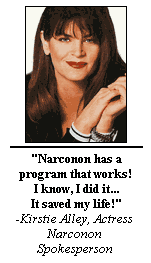
comment corner
 |
| drug rehabilitation saving taxpayers |
California taxpayers are saving more money than expected due to ... |
 |
| Study: Marijuana Causes Lung Damage |
New research finds that smoking three or four marijuana cigarettes ... |
 |
| Thanks to Online Pharmacies, Addiction Can Be Just a Click Away |
WASHINGTON -- Kelly Knable, a 34-year-old mother of three from ... |
 |
| Balancing pain and drug addiction |
Over the past two decades, two conflicting medical ideas have ... |
 |
| Clean break |
... |
 |
| State officials create prescription drug abuse task force |
TALLAHASSEE, Fla. -- State officials on Friday announced the creation ... |
 |
| Florida system often fails to catch Medicaid abuse at source |
FORT LAUDERDALE, Fla. - (KRT) - The victim's skin was ... |
 |
| Marijuana's rising threat: For more kids, use turns into addiction |
John Brown experimented with marijuana at age 10, and it ... |
 |
| Student gets state prison term for selling marijuana |
EASTON -- David Messina had his whole life ahead of ... |
 |
| Man charged in cocaine case forfeits $585,000 |
An Iowa truck driver arrested by Kentucky Vehicle Enforcement officers ... |
 |
| Cocaine Curtails Body's Ability to Cool Off |
In addition to triggering life-threatening cardiovascular episodes, cocaine can be ... |
 |
| Science for Cops |
I admit it: I'm a Law & Order fan. ... |
 |
| New Gene Therapy Could Help Quell Alcoholic Cravings |
One prevailing view of addiction holds that alcohol and other ... |
 |
| One Dose of Cocaine Primes the Brain for Addiction |
It isn't a myth: one dose of cocaine is all ... |
 |
| Marijuana Firmly Linked to Infertility |
Scientists from the University of Buffalo have smoked out what ... |
 |
| Moderate Alcohol Consumption Clouds Brain's Ability to Detect Mistakes |
It's common knowledge that a brain on booze doesn't function ... |
|
Narconon Pictures |
|
 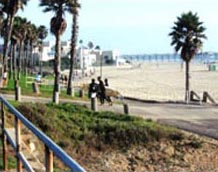 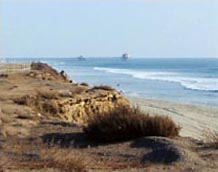 |
|